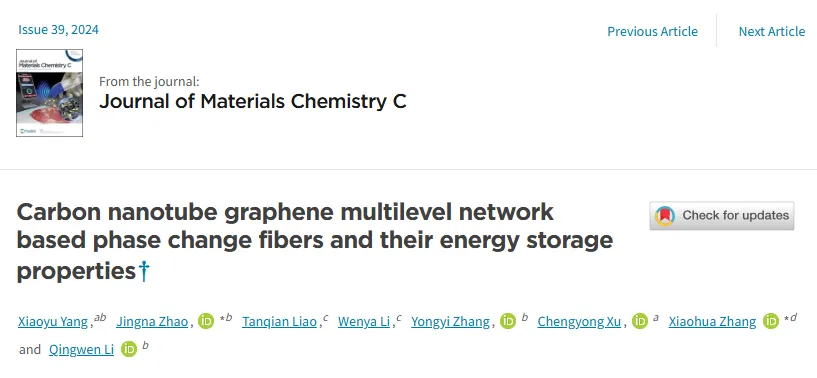CNT-Graphene Phase Change Fibers for Thermal Management and Energy Storage – Suzhou Institute of Nano-Tech, Chinese Academy of Sciences
Overview
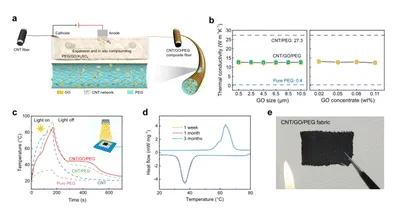
Phase change fibers capable of storing and releasing thermal energy are gaining attention in the development of wearable thermal management textiles. However, producing phase change fibers with excellent thermal conductivity and energy storage properties remains a challenge.
Researchers from the Suzhou Institute of Nano-Tech and Nano-Bionics (SINANO), Chinese Academy of Sciences, and Donghua University, led by Jingna Zhao and Xiaohua Zhang, have developed carbon nanotube (CNT)-graphene composite phase change fibers. Their study, published in Journal of Materials Chemistry C, titled “Carbon nanotube graphene multilevel network based phase change fibers and their energy storage properties,” presents a novel in-situ impregnation strategy. By introducing graphene oxide (GO) and polyethylene glycol (PEG) into the CNT network, they achieved multilevel 1D-2D architectures with high phase-change enthalpy and efficient thermal management properties.
Research Highlights
- In-situ impregnation method:GO and PEG are integrated into the expanded CNT network to form CNT/GO/PEG composite fibers.
- Multilevel network structure:GO enhances interfacial contact, increasing the network’s stability and volume capacity.
- High phase change efficiency:The composite fibers exhibit a PEG content of 96.8-98.4%, along with improved heat storage and controlled thermal conductivity.
Key Figures and Visuals

- Figure 1: Fabrication of CNT/GO/PEG fibers using the expansion and impregnation method.
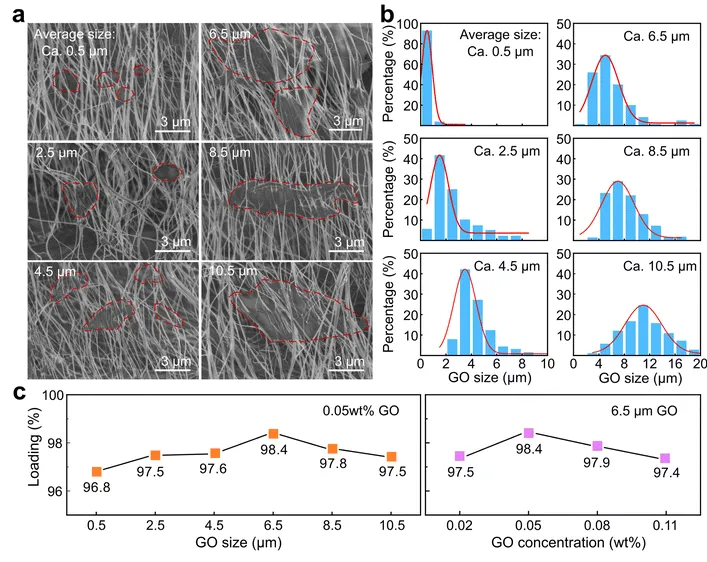
- Figure 2: Impact of GO on PEG loading efficiency.

- Figure 3: Thermal conductivity performance of the composite fibers.
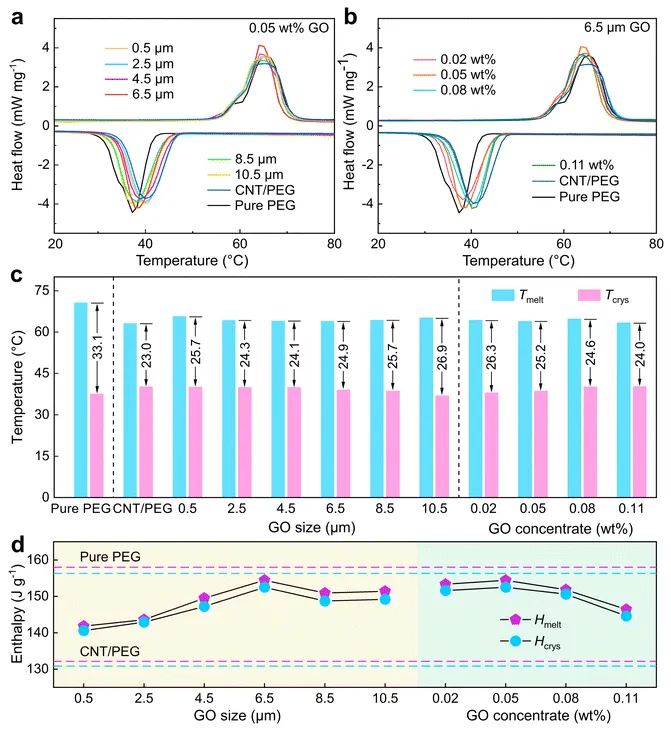
- Figure 4: Phase change properties of CNT/GO/PEG fibers.
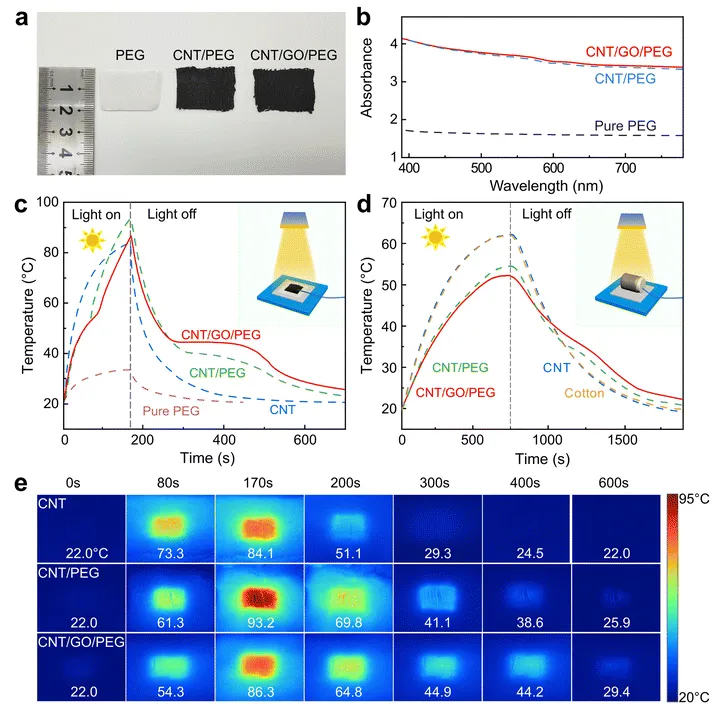
- Figure 5: Photothermal properties of different textile fabrics.
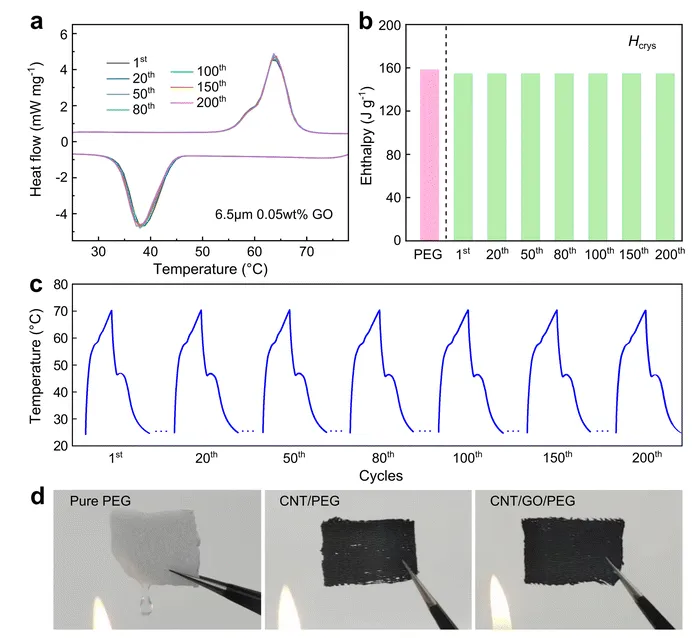
- Figure 6: Durability and cycle performance of CNT/GO/PEG fibers.
Summary
By combining GO and PEG into CNT networks through a cooperative in-situ impregnation approach, the researchers successfully created high-performance phase change fibers. The CNT/GO/PEG fibers demonstrated the following key properties:
- High PEG content: 96.7% to 98.4%, enabling significant energy storage capacity.
- Optimized thermal conductivity: GO’s multilevel network reduces thermal conductivity to 5-13.5 W m⁻¹ K⁻¹, enhancing insulation efficiency.
- Excellent thermal stability: The fibers exhibit strong anti-leakage properties and stable phase change behavior across multiple cycles.
These properties make the composite fibers ideal for energy-efficient thermal management textiles. With high photothermal utilization and insulation performance, this innovation holds great promise for wear。
